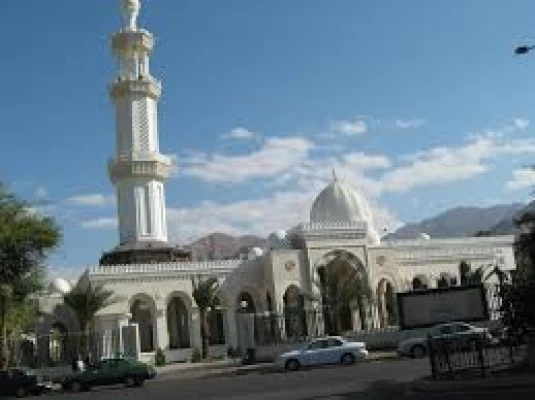
Aqaba Bird Observatory
Aqaba Birding Observatory
Is located in the Peace Forest near the southern crossing of Wadi Araba. The observatory was established in 2004, with a total area of 0.5 square kilometers.
It is run by the Royal Society for the Conservation of Nature and is an important site for many European and African migratory species. The observatory is open all year round, but the best time to visit is in the spring and fall months.
The successive monitoring operations at the observatory resulted in the registration of 271 different species of birds, which together constitute 57% of the total number of species registered in Jordan, with a population of more than a quarter of a million birds during one year represented by two migration seasons.
Also, 17 species of rare bird species were recorded in Jordan during the last ten years, including the small glue geese, which is endangered worldwide and listed on the Red List of the International Union for Conservation of Nature.
The increasing number of species recorded in the Aqaba Bird Observatory is a vital indicator of the health and safety of the environments, which reflects the results of the protection and preservation of these environments.
The Aqaba Bird Observatory includes a group of aquatic, forest, and desert environments, which together ensure the attraction of diverse and different types of birds during their crossing of Aqaba in the spring and autumn migrations.
The importance of the observatory:
Jordan is located on the second most important flight path for soaring birds in the world, known as the Rift Valley - the Red Sea, and this path connects the eastern parts of Europe and western Asia on one side and Africa on the other.
The number of flying birds that cross it is estimated to reach seven and a half million birds, and numbers may reach twice this number than other non-flying species. And because most birds are unable to swim in the water, so they choose the shortest distance over the seas and oceans during their migration.
Therefore, the Aqaba region is one of the important areas for birds to cross to be able to cross to the Sinai desert and then spread to the regions of Africa in the way and back. During the migration seasons.
the Aqaba Bird Observatory opens the way for visitors within standards that guarantee the safety of environments and birds by giving them the opportunity to watch migratory species during their rest on the site, which highlights the unique eco-tourism value in this place, as the annual total of visitors reaches about 10,000 visitors.
The Royal Society for the Conservation of Nature, by virtue of its experience in managing nature reserves, manages this place to ensure the sustainability of its environment and activate its role as an eco-touristic product based
on a distinctive addition to a distinctive tourist activity that plays an important role in enhancing the environmental awareness aspect of visitors, especially about their viewing of different numbers and types that many have never before them seen before.
The Aqaba Special Economic Zone Authority also gives this site special importance by ensuring its sustainability and development in cooperation with the Royal Society for the Conservation of Nature.
Latest Articles
Admin
Seabourn Sojourn Cruise Stops in Safaga Port
The Seabourn Sojourn, the flagship vessel of Seabourn Cruise Line's ultra-luxury fleet, was built in 2008 at the T. Mariotti shipyard in Genoa, Italy. Measuring 198 metres, it can accommodate up to 450 guests in its 225 spacious all-suite staterooms.
Admin
Norwegian Sky Cruise Stops in Safaga Port
Norwegian Cruise Line operates a cruise ship called the Norwegian Sky. It was constructed in 1999 and can accommodate 2,004 passengers in addition to 878 crew members. The ship has several dining establishments, lounges and bars, a spa and fitness center, swimming pools, and a number of entertainment areas.
Admin
Explora II Cruise Stops in Safaga Port
Explora II, the second vessel in the Explora Journeys fleet, sets sail in 2024 to redefine luxury cruising. With 461 ocean-front suites, 9 culinary experiences, and 4 pools, this haven of sophistication and sustainability promises an unforgettable "Ocean State of Mind" journey to inspiring destinations.
Admin
Mein Schiff 6 Cruise Stops in Safaga Port
The Mein Schiff 6 is the latest cruise ship in the renowned TUI Cruises fleet, offering passengers a luxurious and sophisticated cruise experience. At 315 metres long, this floating resort features a range of dining options, entertainment, and recreational facilities, including a spa, fitness centre, and sports amenities.
Admin
Mein Schiff 4 Cruise Stops in Safaga Port
When the Mein Schiff 4 cruise ship docks in Safaga, Egypt, passengers are granted access to a realm of ancient wonders. Aboard this state-of-the-art vessel, guests can embark on meticulously curated shore excursions that showcase the region's most iconic landmarks, including the Giza Pyramids, the enigmatic Sphinx, and the remarkable tombs and temples of the Valley of the Kings in Luxor.
Admin
MS Europa Cruise Stops in Safaga Port
The Silver Moon, Silversea's latest flagship, is a luxury cruise ship that offers an exceptional travel experience for Venezuelans exploring Egypt. With a capacity of 596 guests and an impressive 40,700 gross tonnes, the Silver Moon maintains the small-ship intimacy and spacious all-suite accommodations that are the hallmarks of the Silversea brand.














